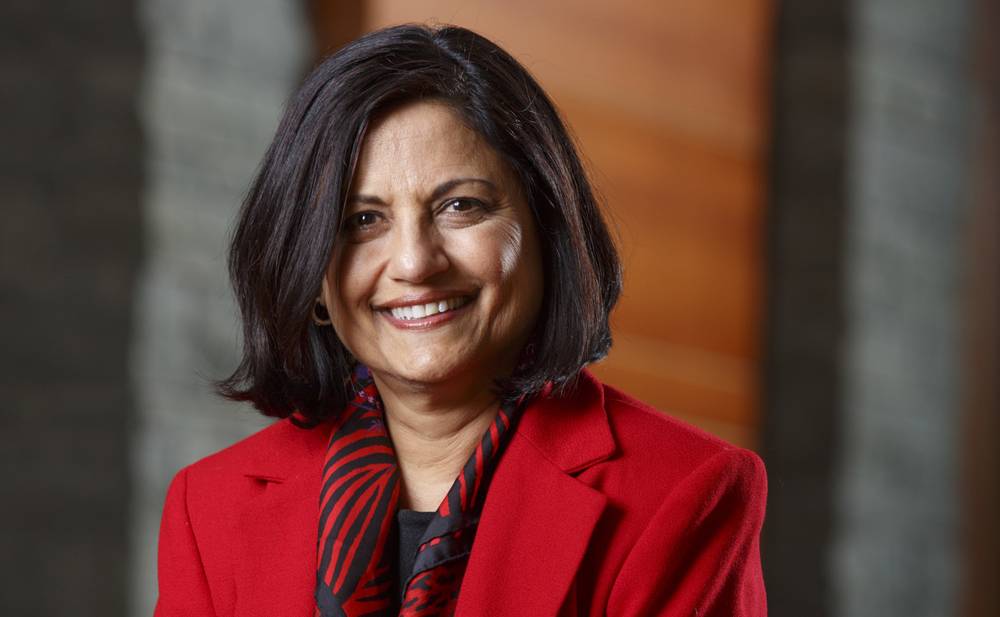How Innovation Happens at Tuck: A Conversation with Punam Anand Keller
Marketing professor Punam Anand Keller is settling in to her new role as associate dean for innovation and growth

When Matt Slaughter became the Paul Danos Dean of Tuck last summer, he and Punam Anand Keller, the Charles Henry Jones Third Century Professor of Management, discussed the scope and title for a new role for Keller. Given her expertise in marketing and change behavior, they landed on a job never before seen at Tuck: associate dean for innovation and growth.
For Keller, there were a few reasons why Tuck needed a sharper focus on innovation. One is that competition among two-year residential MBA programs is fiercer than ever. Another reason is that students expect more of a business school these days, demanding new products and programs more frequently.
Keller approaches this reality with a mindset of evaluation, innovation, and iteration. “My role is to constantly challenge what we do, continuously improve on things we already do, and challenge ourselves to come up with new and different ways of doing things in order to thrive in this new global and virtually competitive environment,” she said.
Since becoming associate dean, Keller has undertaken an effort she calls “learn, lean, and leverage,” auditing the departments, centers, and initiatives under her purview; seeking guidance and advice from colleagues; and studying how Tuck can add to and improve what it already has.
How are you bringing your expertise in marketing to bear on innovation at Tuck?
I wanted to bring a market or external perspective to our strategy. I call it an outside-in perspective rather than an inside-out perspective. I wanted to make more salient the effects of market trends, target-audience needs, a consumer focus, and a stronger competitive focus in our decision making and strategy. I’m a marketing professor and that’s what we do. I felt that was a more proactive approach and a more sustainable approach for our investment strategy and new programs, versus a reactive approach where we made decisions about programs that came to us.
What are some examples of this “outside-in” perspective at work?
I think there’s a huge unmet need for undergraduate business education, especially for liberal arts colleges. There was a big McKinsey report that said the unemployment crisis was not a function of lack of jobs but lack of skills. So that’s an example of seeing a big trend.
Another example of customer-focus orientation is that professional athletes have a very short professional life – the average NFL player plays for three and a half years, and an NBA player for 5 years. And they amass very big fortunes during that time, and yet a significant number of them go bankrupt within a few years of retirement. So you say, Is there an opportunity to provide some business literacy and financial literacy? I’m constantly looking at external sources to see where is there an unmet need or opportunity.
How does competition factor into your analysis of what Tuck should be doing?
I’ll give you one example: I look at our centers and try to find best practices for similar centers across universities or non-academic institutions, like the Brookings Institution or the Hoover Institution, and say, What should a good center be? Are we competitive? Which target audiences should we be going after? How well do our centers work with each other, and what kinds of value do they provide to different stakeholders?
What are some new things at Tuck you’re excited about?
I’m excited about some of our executive education custom programs we’re doing for the first time in the luxury market, with Coach as a client. We are also doing more work with companies in the health industry, which is another indication of our leveraging our MHCDS core capabilities. One of our new clients is Quintiles, the world’s largest provider of integrated health services. In Bridge, I’m very excited about some potential opportunities for strategic partnerships with liberal arts colleges; customizing programs so that we can actually increase the number of undergraduates willing to get a liberal arts degree. Then we have some really exciting programs for non-business audiences interested in learning more about business. We’ve made some good initial investments in a program for military vets and I’m looking forward to delivering a program hopefully early next year.